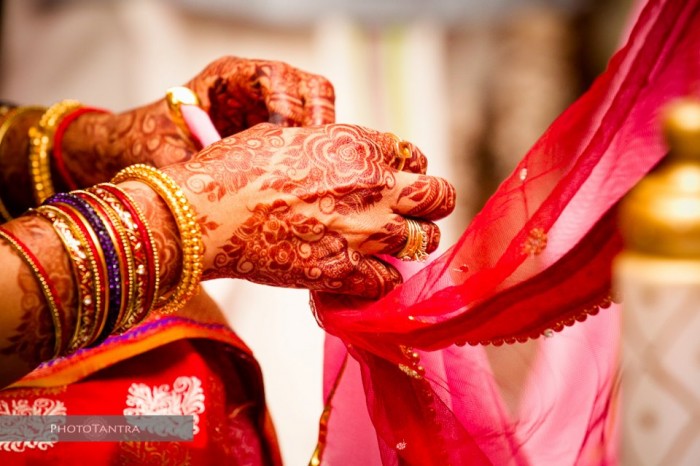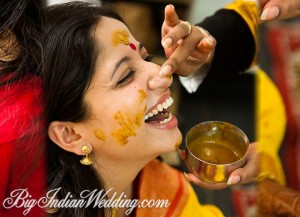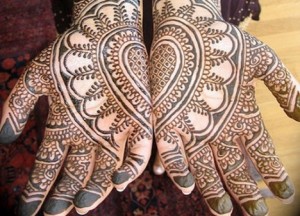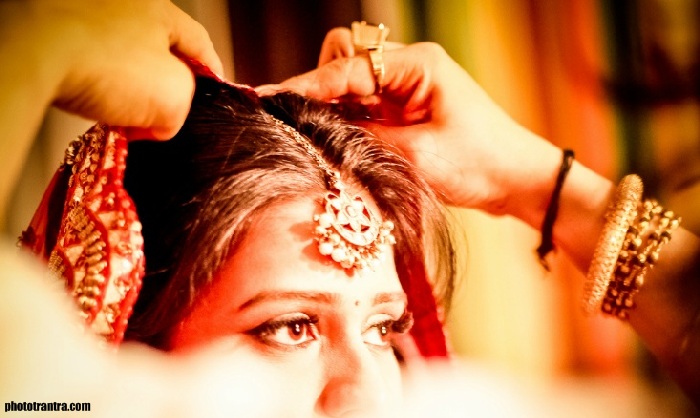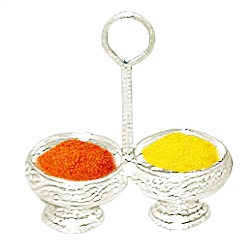The Bunts, who were once famed for their feats on the battlefield, have unique wedding rituals which have stayed true to their rich heritage. Today, many members of this community have made South Karnataka and districts like Kasargod in Kerala, their home. Bunt weddings have many rituals which are highly significant and like many other Hindu communities throughout India, a wedding date is finalized only once the prospective bride’s horoscope is considered to be compatible with that of the bridegroom’s. It is the family astrologer who then chooses an auspicious day and time for conducting the actual wedding rituals.
Nikshaya or The Engagement: In most South Indian pre-wedding ceremonies, the date and time of the wedding is officially confirmed and announced only during the engagement ceremony. According to the Bunt custom, a few men from the bride’s house arrive at the groom’s house carrying a silver platter filled with betel leaves, betel nuts and flowers. Betel leaves signify prosperity and usually mark the beginning of most auspicious events. The exchange of the leaves by the respective family members is a goodwill gesture which also serves as a confirmation of the wedding alliance itself.
Madarengee: Henna has an important place in South Indian weddings and the Bunts have a mehendi ceremony held for both the prospective bride and the bridegroom at their respective homes. Various intricate designs, motifs and other artwork inspired by nature have now replaced the small dots of mehendi that once used to grace the palms and fingertips of a Bunt bride!
Ritual Bath: This ceremony is held a day before the wedding and is held separately at both the prospective bride’s and bridegroom’s houses. The bride is given a bath with turmeric and coconut milk by a few elders in the family. Once this ritual is completed, she changes into a new sari and also wears black bangles. Most Bunt households have a Tulsi plant (katta) which is grown in the centre of the courtyard and which symbolises the Goddess Lakshmi. The bride along with her family members, say a prayer before this sacred Tulsi plant.
Murthasese: This is perhaps considered to be the most important ceremony before the wedding for a bride to-be and the prospective bridegroom’s parents are also invited to be a part of it. Once the prayers are over, the bride to-be is seated in a decorated chair which is placed facing eastwards. A silver plate containing raw rice, haldi, kumkum and coconut signifying the presence of Lord Ganesh as well as a lamp decorated with sweet smelling jasmine flowers is also kept in the room. Red and green glass bangles are distributed to all the ladies present and after the oldest married lady in the group puts a toe ring on the bride’s foot, another five married ladies put the red and green bangles on the bride. Only one black bangle is then left on the bride’s arm to ward off the evil eye. After more flowers are put in the bride’s hair, an aarti of the bride is also conducted and the elders apply a paste of haldi and kumkum on the bride while blessing her simultaneously.
Although a similar function is conducted for the groom on the wedding day itself, the function only involves being presented with gold toe rings and receiving the blessings from elders.
Photos: 101mehndidesigns.us, Mywedding.com Bigindianwedding.com www.phototantra.com

